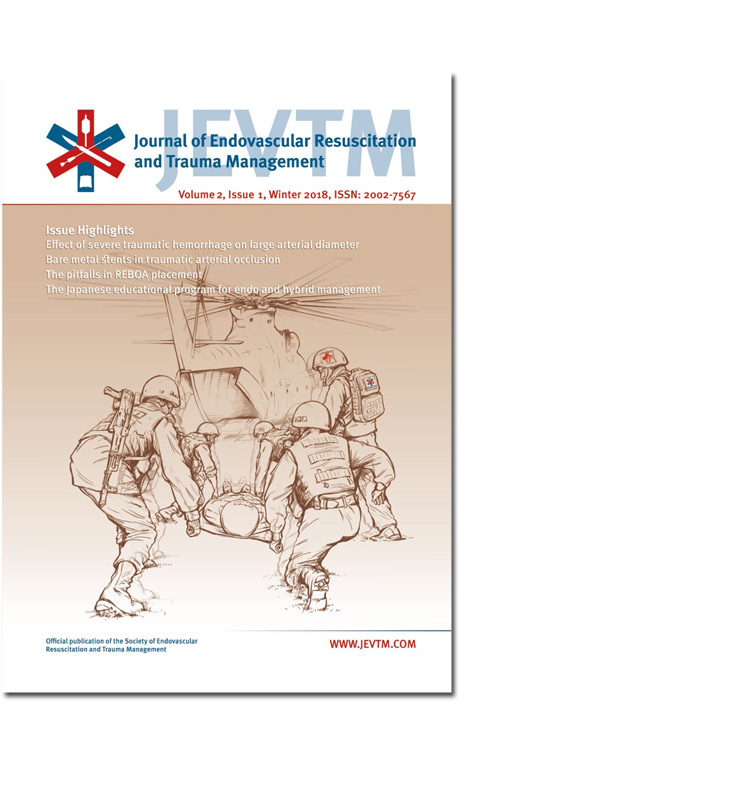Successful and Unsuccessful Blind Placement of Resuscitative Endovascular Balloon Occlusion of the Aorta (REBOA) Catheters Through Damaged Arteries: A Report of Three Cases
DOI:
https://doi.org/10.26676/jevtm.v2i1.43Keywords:
Resuscitative Endovascular Balloon Occlusion of the Aorta, REBOA, Aortic Occlusion, Aorta, Trauma, Arterial Injury, ComplicationAbstract
Background: Patients who receive resuscitative endovascular balloon occlusion of the aorta (REBOA) for temporization ofexsanguinating hemorrhage may have occult injuries sustained to the iliac arteries or aorta which may pose increased risks in performing REBOA. Caution is essential in performing REBOA in these patients as the injuries are not clearly defined on admission. REBOA is currently performed in select centers without fluoroscopy, leading to blind placement of devices and an essential reliance on tactile feedback.
Methods: Patients admitted between February 2013 and July 2017 at a tertiary center who had a successful or unsuccessful blind placement of a REBOA catheter or wire through a damaged iliac artery or aorta were included.
Results: Three patients were identified. Two patients had successful placement of the REBOA catheter; one sustained injury to the external iliac artery and the other sustained injury to the abdominal aorta. Confirmation of catheter placement was obtained before balloon inflation, and the damaged vessels were identified upon immediate operative intervention. One patient had unsuccessful placement of the REBOA catheter during cardiac arrest despite accurate access of the common femoral artery (CFA).
Conclusions: Emergent, blind placement of wires and catheters past arterial injuries is possible but may result in procedural abandonment and/or arterial injury. Physical exam and/or tactile feedback should alert the surgeon to the possibility of arterial injury. Imaging confirmation should precede balloon inflation if at all possible.
Published
How to Cite
Issue
Section
License
Copyright (c) 2018 Journal of Endovascular Resuscitation and Trauma Management

This work is licensed under a Creative Commons Attribution 4.0 International License.
Authors of content published in the JEVTM retain the copyright to their works.
Articles in the JEVTM are published under the terms of a Creative Commons CC BY 4.0 license, which permits use, downloading, distribution, linking to and reproduction in any medium, provided the original work is properly cited.




